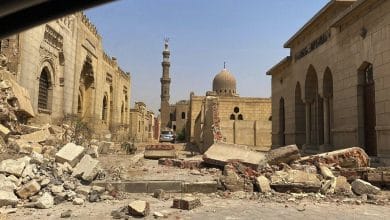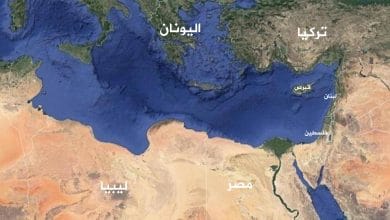
The economic situation is undoubtedly a major factor for the stability of any society. However, the regime of General Abdel Fattah Al-Sisi mainly relies on tightening its security grip which is significantly supported by the army. Also, we cannot overlook the regional and international support for the Sisi regime, both in armament through the unconditional supply of weapons and at the economic level through the lavish grants and loans that the regime has received.
There is some improvement in financial and monetary indicators that some see as an indicator of economic recovery that paves the way for achievement of economic stability in the country. However, this is a hasty conclusion that does not take into consideration the high costs of such improvement.
In 1991/92, Egypt achieved progress in the same financial and monetary indicators, but failed to achieve any economic stability and was exposed to regional and international economic fluctuations that caused financial crises in the late 1990s and at the beginning of the third millennium, and during the global financial crisis in 2008.
In fact, the Egyptian economic situation under Sisi has worsened because of the dominating role played by the army in the civilian economy and its control over the joints of the state economy, as well as its fierce competition with the private sector, which prompted the latter to act as a “subcontractor” to the former.
In order to find out the reality of the economic situation in Egypt, it is necessary to refer to a set of important indicators that would explain Egypt’s economic performance and show the likeliness of achieving economic stability in the short and medium term.
First: A Funding Gap
The funding gap is the difference between public revenues and expenditures in the state budget. According to the draft budget of the fiscal year 2019/2020, the total deficit is estimated at 445 billion Egyptian pounds (equivalent to 26 billion dollars), and the government can only cover this deficit through internal and external borrowing. Moreover, the service of the public debt that is increasing considerably represents 83% of the total revenues of the Egyptian state, with revenues estimated at LE 1.13 trillion, while debt burdens are estimated at LE 944 billion. Egypt is not expected to break the impasse of the funding shortfalls and the increased indebtedness in the short and medium term.
While the Egyptian government announces that the public debt has fallen to 89% of GDP (as targeted in the budget of 2019/2020), the debt value is increasing, as domestic debt in December 2018 reached LE 4.1 trillion, and the external debt reached 96 billion dollars, as well as an upward trend in debt burdens, including premiums and interest rates.
Second: A Productivity Gap
Although the wide gap between Egypt’s commodity exports and imports is one of the chronic problems, Sisi’s successive governments have failed to introduce any new policies to bridge this gap, even in the medium term. According to the figures of the balance of payments for the fiscal year 2017/2018, the trade deficit is US $ 25.7 billion, while commodity imports are $ 63 billion, taking into consideration that the oil exports account for 33.7 percent of the total commodity exports and that the oil exports do not represent a net income of the Egyptian state, as they include the share of the foreign partner, which amounts to about 40% of the Egyptian oil exports.
According to data of the Central Bank of Egypt (CBE), the structure of the non-oil commodity import payments reveals the weak performance of Egyptian production, where the consumer goods represent the second highest position by 27.5% after the intermediate goods that represent 34.3%. The investment commodities (machinery, means of transport and spare parts) represent 19.2%, and the raw materials 13.5%.
In the light of the practices of the economic administration in Egypt, the limited financial resources are mismanaged, as they are invested in unnecessary or non-productive projects, which means that Egypt will continue to depend on importing food, tools, machinery, and means of transport as well as technology from abroad. Hence, Egypt’s productivity gap will deepen over the short and medium term.
Third: A Gap between Savings and Investments
Domestic financing is the most important source of funding for development projects and economic activities, but since the July 3 military coup in Egypt, the rates of savings have been very modest due to the economic measures that have been followed, especially after the signing of the IMF agreement in November 2016. According to data from the Egyptian Ministry of Finance, the domestic savings account for 6.2% of GDP, while investments represent 16.7% in 2017/2018. Thus, there is a gap of 10% of GDP financed by loans. In addition, the fact that local investments account for 16.2% of GDP is not commensurate with the target economic growth rates which require that the proportion of domestic investments reach 30%.
In the light of austerity measures and the targeting of liberalization of public goods and services, the domestic savings are not expected to increase as required and bridging the gap between savings and investment in the short and medium term is almost impossible. In addition, investment in Egypt is of a traditional nature in the fields of agriculture, industry and services, lacking the high added value due to absence of Egypt from technology production.
Fourth: Fragility of Gross Domestic Production
While the Gross Domestic Production (GDP) is measured by the extent of dependence on productive sources, as well as the added value it achieves, it is noticeable that Egypt’s GDP relies heavily on consumption, where consumption represented 93% of the GDP value in 2017/2018. However, the problem is that the consumption needs are mainly met through importing from abroad, which is manifested in the successive increases in the value of the commodity import bill. Unless Egypt achieves fundamental amendments in the structure of its GDP, the talk about increasing the GDP or achieving any growth rates is merely for political and media consumption. The fact is that the GDP will not respond to the society needs, especially absorption of the new entrants to the labor market or alleviation of the accumulated unemployment.
Through analyzing the Egyptian government’s development policies, the GDP fragility is expected to continue in the short and medium term. Therefore, the recent World Bank press release has been shocking, as it confirmed that the poverty rates in Egypt amounted to about 60%; that the middle class, which is the source of savings, is suffering greatly, and that inequality is increasing. “More efforts are needed to accelerate economic inclusion and absorb a growing labor force. Some 60 percent of Egypt’s population is either poor or vulnerable, and inequality is on the rise,” the WB statement read.
The ratio of domestic savings to GDP is still low, as mentioned above, at 6.2%, which proves that the findings of the press release of World Bank experts are accurate. Therefore, we conclude that the talk of a high growth rate of GDP in Egypt to about 5.5%, lacks credibility, because it does not benefit the poor and middle classes. Accordingly, the fact that the middle and lower classes do not benefit from the GDP growth rate declared by the government – if we supposed that it is correct – has led to reducing the proportion of savings.
Regarding the announcement of Sisi’s government of a growth rate of 5.5%, needs verification, as this growth rate has been achieved through debt financing, where the increase in domestic debt only during the same year reached 20%. Adding the increase in external debt, we find that the increase in the public debt may reach 25% to 30 %, which means that the cost is high, while the government does not announce its fiscal policy on getting out of this vortex, which will always put the fiscal policy maker under pressure and lead to disposing of public property in the form of productive or service projects (as recently announced by the government that it intends to privatize 23 projects and institutions over the period 2018-2020), according to the government’s agreement with the International Monetary Fund.
Fifth: Subdued Foreign Direct Investment
Sisi and his ministers have often spoken about their great ambitions for foreign direct investment, but the reality did not reflect these ambitions as Egypt lacks any positive elements to attract these investments. According to the CBE data, these investments reached $ 7.7 billion in 2017/2018, 200 million dollars less than the investments achieved of 2016/2017.
The CBE data show that the majority of these investments come in the oil and gas sector, thus wasting Egypt’s chances of supporting development through these investments. It is remarkable in the case of Egypt that foreign indirect investments are much more than foreign direct investments, which means that Egypt will lose the opportunity to benefit from these investments in bringing technology, increasing exports or employing new manpower. The CBE data show the structure of foreign investments as follows:
– Investment in the petroleum sector accounted for 66.3%,
– The services sector accounted for 11.8%,
– The industrial sector accounted for 10.2%,
– The construction sector accounted for 4.3%, and
– The agricultural sector accounted for 0.1%.
In this non-positive structure, we noted that the oil sector is a capital-intensive sector that does not provide employment opportunities commensurate with the amount of investment spent. The second aspect is that the foreign partner’s benefit is high. The third aspect is that Egypt has not benefited from these investments over the past decades in the adaptation of the technology of this sector, or attempted to produce the investment requirements of technology, although Egypt has human resources and cadres capable of accomplishing this task, taking into account that many Egyptians intensively work in the Gulf countries’ oil sector and other international oil companies.
Reality of development of Egyptian economy
The economic discourse of the Egyptian regime together with some international institutions promote for the success of the economic reform program. To prove this, they rely on a set of indicators such as the rise in foreign exchange reserves, the decline in unemployment and inflation rates, the decline in the public debt to the GDP, or the improvement of the local currency’s exchange rate.
However, an analysis of the content of this discourse and a deep reading in the declared figures show that the rise in foreign exchange reserves is linked to the increase in Egypt’s external debt which amounted to $ 96 billion by the end of 2018. The decline in inflation is due to the end of a previous wave, not the result of improved production and improved real incomes of individuals. As for the decline in unemployment rate, it is simply a manipulation of statistics, where the numbers of new entrants to the labor market are deliberately underestimated.
To illustrate the numerical and statistical manipulation of unemployment rates in Egypt, we will have a look at the 2017 Labor Force Annual Bulletin issued in May 2018: On page 13, we find that the labor force was 28.4 million people, 28.9 million people, 29.5 million people in 2015, 2016 and 2017 respectively, that is, the number of entrants to the labor market in 2016 and 2017 was about 500 thousand individuals and 600 thousand individuals respectively.
These figures completely contradict the findings of the Annual Statistical Book of 2018, that was published on the official website of the Central Agency for Public Mobilization and Statistics (CAPMAS), which showed that the graduates of universities and voc./tech. schools amounted to 922 thousand individuals and 978 thousand graduates in 2016 and 2017 respectively. Adding the illiterate entrants to the labor market, we find that the number exceeds one million people at the lowest estimates.
In attempt to justify this, some may say that some graduates go to spend their compulsory military service and do not enter the labor market; but they forgot that an almost equivalent number would have completed their military service at the same time and have become ready to join the labor market. This variable of military service is negligible with respect to its impact on the decline in the number of people entering the labor market. Based on this result, the labor force in 2017, for example, will be 30 million, not 29.5 million, as announced by CAPMAS, and the unemployment rate will be 13.3%, not 11.8%. Therefore, all unemployment rates announced after the military coup in July 2013 are questionable, and surprisingly, IMF experts approve them.
Table: Graduates of educational institutions in Egypt during the period 2013-2017 (Numbers in thousands):
| Statement | University Graduates | Graduates of Voc./Tech. Schools | Total |
| 2013 | 463 | 544 | 1007 |
| 2014 | 308 | 537 | 845 |
| 2015 | 378 | 555 | 933 |
| 2016 | 487 | 435 | 922 |
| 2017 | 537 | 441 | 978 |
Source: Egypt’s Central Agency for Public Mobilization and Statistics, Annual Statistical Book, 2018
The talk about the decline in the ratio of the public debt to GDP lacks credibility taking into account the funding gap in the state budget, and the improvement in the Egyptian pound’s exchange is largely due to the foreign investments in the local debt. In a report published by Reuters on 29 May 2019 the news agency quoted Dubai-based Lighthouse Research as saying that the appreciation of the EGP against key currencies since the start of the year “defied the broader sell-off in global emerging market assets”.
Conclusion
What is going on in Egypt is no more than a repeat of the 1991/1992 experience, taking into consideration that the Egyptian government has not moved to improve its productive position, which aggravated its economic crisis. It is important to emphasize that the support provided to the Sisi regime through loans and credit facilities by the Gulf countries and China is largely supportive of its current economic image, not the validity of its economic policies or its economic performance in various sectors.
We must also realize that this support is not provided to Sisi for free, and that the Egyptian government repays the required price at the expense of the nation’s political and economic status.
To Read Text in PDF Format Click here.



